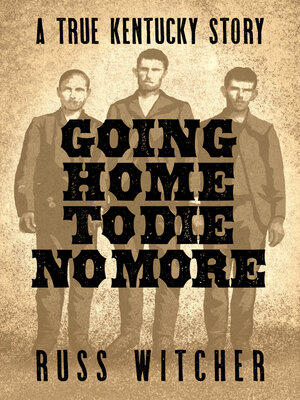Going Home to Die No More
ebook ∣ A True Kentucky Story about a Train Robbery and a Hanging after the Civil War
By Russ Witcher

Sign up to save your library
With an OverDrive account, you can save your favorite libraries for at-a-glance information about availability. Find out more about OverDrive accounts.
Find this title in Libby, the library reading app by OverDrive.



Search for a digital library with this title
Title found at these libraries:
| Library Name | Distance |
|---|---|
| Loading... |
It all began in November 1866, when Captain William P. King, a Union army veteran, along with 12 accomplices, derailed a Louisville & Nashville Railroad train, sending the iron steam engine plummeting down a 40-foot embankment just north of their homes in Franklin, Kentucky. No one was killed, but much was lost in the resulting fire, some $25,000 in cash, part of a considerable booty which included a carpetbag containing ten thousand dollars worth of vouchers and other valuable papers.
When the L&N Railroad offered a $10,000 reward for the capture of the guilty parties, one of the robbers, Captain King's brother, Harvey—perhaps interested in keeping the reward for himself—ratted out the others. That weekend, Harvey King would turn up dead.
The remaining 12 men were apprehended, arrested, and charged with murder, armed robbery, and derailment of a train. The murder trial was held first. King and another of the robbers, Abraham Owens, were convicted of the murder of Harvey King. After two unsuccessful attempts to escape prison, the pair was hanged in June 1867.
Until the end, the two doomed men maintained their innocence. A transcript of the trial reveals questions about the timeline of the shooting of Harvey King. Some evidence suggests Captain King and Abraham Owens were nowhere near the scene of the murder. History asks the question: did the wrong two men hang?







